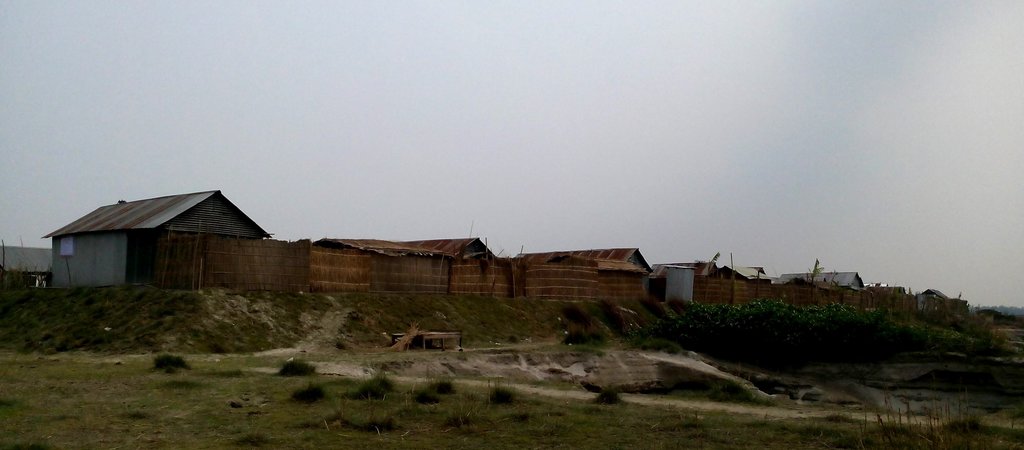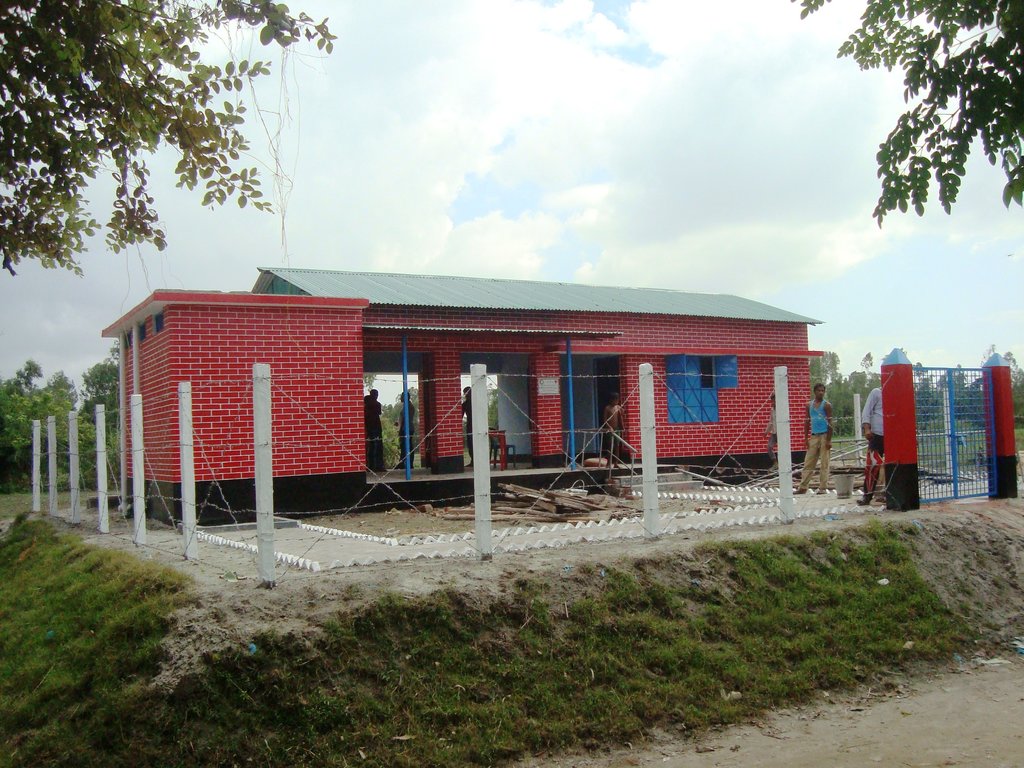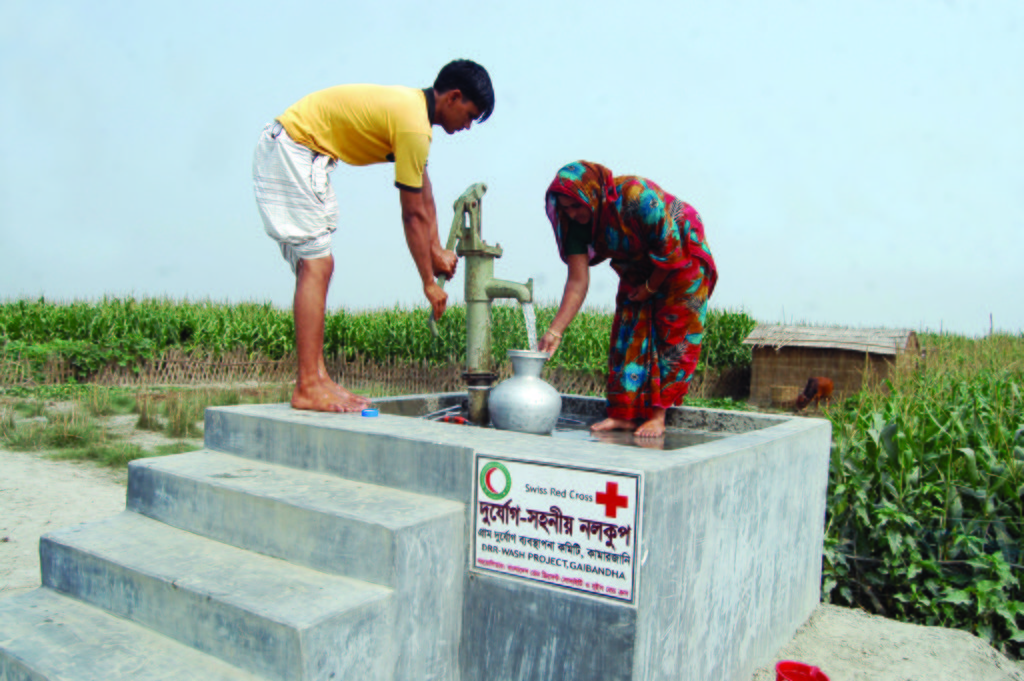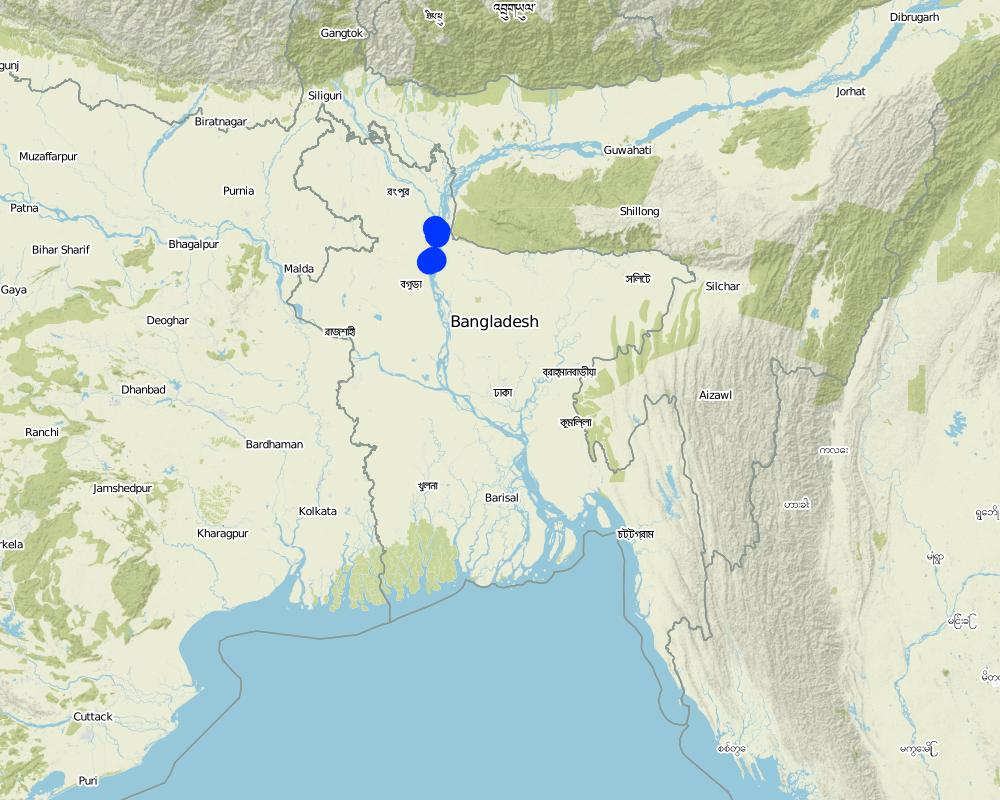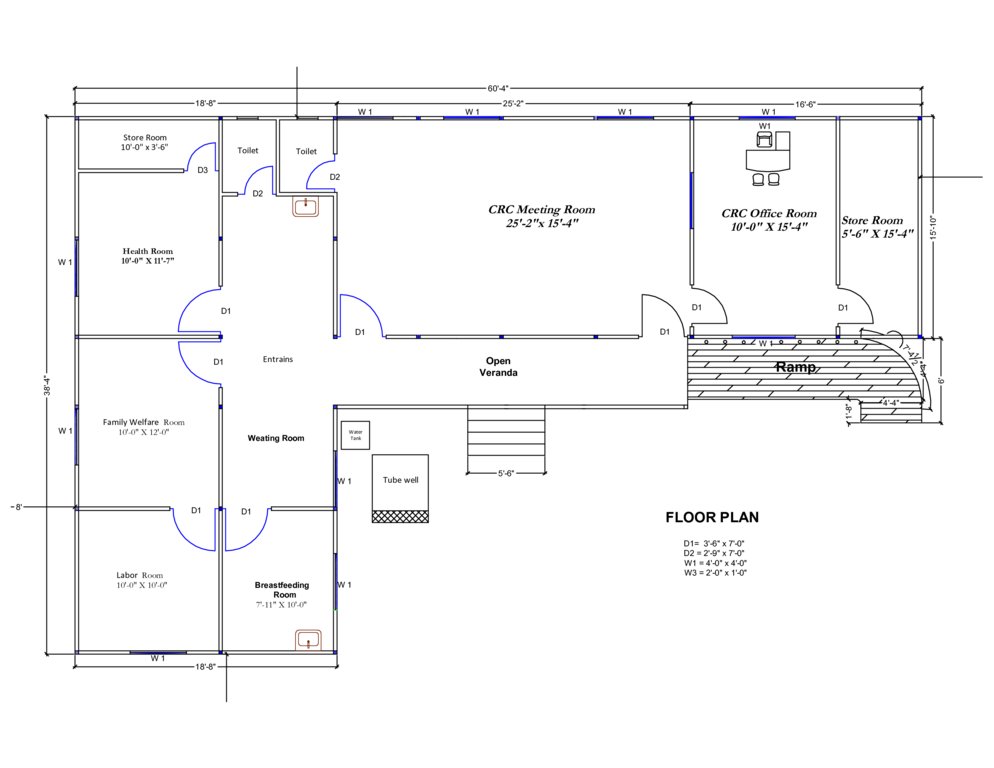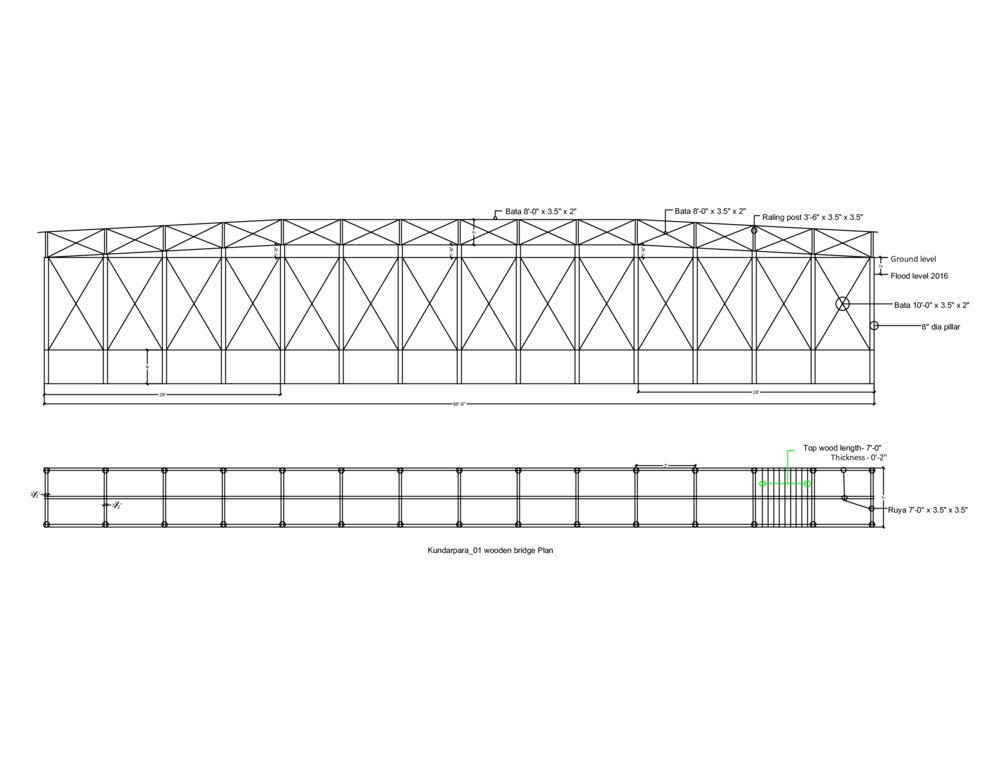Emergency infrastructure including shelter and linked transport infrastructure [Бангладеш]
- Создание:
- Обновить:
- Составитель: TUHIN SAMADDAR
- Редактор: Anton Jöhr
- Рецензенты: Nicole Harari, Hanspeter Liniger, Alexandra Gavilano
দুর্যোগ সহনশীন অবকাঠামো উন্নয়ন (Durjog-shahonshil abokathamo unnayon)
technologies_664 - Бангладеш
- Полная аннотация в формате PDF
- Полная аннотация в формате PDF для вывода на печать
- Полная аннотация в формате интернет-страницы
- Полная аннотация (неотформатированно)
- Emergency infrastructure, shelter and access: 28 марта 2017 г. (inactive)
- Emergency infrastructure including shelter and linked transport infrastructure: 2 августа 2017 г. (inactive)
- Emergency infrastructure including shelter and linked transport infrastructure: 10 ноября 2017 г. (inactive)
- Emergency infrastructure including shelter and linked transport infrastructure: 5 марта 2019 г. (public)
Просмотреть разделы
Развернуть все Свернуть все1. Общая информация
1.2 Контактные данные специалистов и организаций, участвующих в описании и оценке Технологии
Ответственный (-ые) специалист (-ы)
Project Staff:
Mustafa Golam
+880 1718770373 / +880 1730799762
pmdrrwash16@gmail.com
Bangladesh Red Crescent Society
Project Manager, DRRWASH Project O⌀ਈce, Shukhsantir Bazar, Dhanghora, Gaibandha, Bangladesh
Бангладеш
Project staff:
Razzak Abdur
+880 1730 799763 / +880 1730 799763
razzak.pe@gmail.com
Bangladesh Red Crescent Society
Project Engineer, DRRWASH Project O⌀ਈce, Shukhsantir Bazar, Dhanghora, Gaibandha, Bangladesh
Бангладеш
Project Staff:
Islam Saiful
+880 1730 799746 / +880 1730 799746
saiful644@gmail.com
Bangladesh Red Crescent Society
Field Officer DRR and Training, DRRWASH Project Office, Shukhsantir Bazar, Dhanghora, Gaibandha, Bangladesh
Бангладеш
Название проекта, содействовавшего документированию/оценке Технологии (если применимо)
Book project: where people and their land are safer - A Compendium of Good Practices in Disaster Risk Reduction (DRR) (where people and their land are safer)Название организации (-ий), содействовавших документированию/оценке Технологии (если применимо)
Swiss Red Cross (Swiss Red Cross) - Швейцария1.3 Условия, регламентирующие использование данных, собранных ВОКАТ
Когда были собраны данные (на местах)?
04/10/2016
Составитель и ответственный(-ые) специалист(-ы) согласны с условиями, регламентирующими использование собранных ВОКАТ данных:
Да
1.4 Декларация по устойчивости описываемой Технологии
Вызывает ли описанная здесь Технология проблемы деградации земель настолько, что ее нельзя назвать природосберегающей?
Нет
Пояснения:
The technology presented has no direct bearing on land degradation.
1.5 Ссылка на Анкету (-ы) по Подходам УЗП
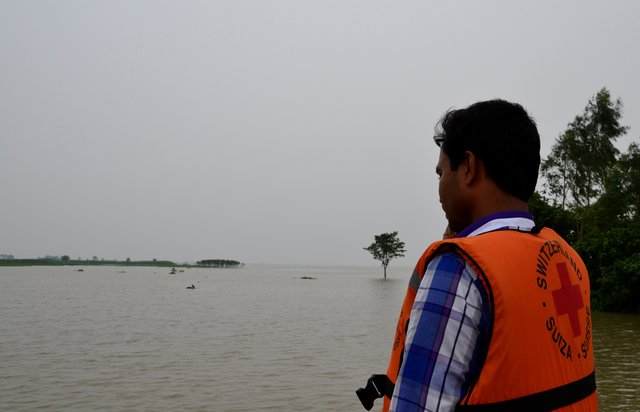
Early Warning Message Dissemination [Бангладеш]
An effective system for dissemination of early warning messages was established among the vulnerable communities in Chars (riverine sandy islands) of Gaibandha district, Bangladesh, in order to strengthen their coping mechanisms and reduce loss and damage caused by floods.
- Составитель: TUHIN SAMADDAR
2. Описание Технологии УЗП
2.1 Краткое описание Технологии
Определение Технологии:
Emergency infrastructure including shelter and linked transport infrastructure, consists in establishing specific flood shelters (for people and animals) including flood-proof collective water sources and communication infrastructure as well as health and school facilities that may serve at the same time as emergency shelters during floods.
2.2 Подробное описание Технологии
Описание:
The technology applies to the specific context of the ‘Char’ land in Bangladesh, characterised as riverine sandy Islands along the Jamuna River. More than 80% of the land in the intervention area can be classified as 'Char' and is inhabited by 60% of the population served by the project. Every year, especially during floods, the rivers deposit huge amount of silt sediment that makes the land fertile. At the same time, river action washes away some portion of the 'Char' which at times can be quite large and has a strong impact on people's lives and livelihoods. Before the intervention, people living on 'Char' land depended on their traditional early warning mechanisms and were frequently surprised by floods that destroyed their crops and put their lives in danger. Due to recurring floods, people didn’t have the means to improve their built environment. The 'Char' land is furthermore characterised by its lack of public infrastructure and remoteness to public services.
The technology consists of setting up an emergency infrastructure and ensuring community access to these infrastructures during times of floods. It has to be understood in close interrelation with the approach of setting up an early warning system. The emergency infrastructure includes specific flood shelters (for people and animals), flood-proof collective water sources and sanitation systems, transport infrastructure such as foot bridges and elevated rural roads, as well as flood-proof health and school facilities that also serve as emergency shelters during floods. The flood shelters are built on a raised bed of soil and located at sites selected by the communities that are relatively better protected from flood and river erosion within the 'Chars'. The purpose of the technology is to ensure safety of life and protection of assets during times of emergency and also to mitigate sufferings related to floods. The flood shelter is an elevated plane land which is on an average 220 square feet by size and at least five feet high from the existing ground level. The site is selected by the community and should be connected through an elevated road to the nearest community. This arrangement helps people to get easy access during times of floods. The shelter has collective hygienic latrine facilities and safe water sources. People generally dismantle their housing while evacuating and reinstall it on the flood shelter.
The major activities include facilitating the development of community-led risk reduction action plans and their implementation through community participation and engagement of local governance institutions. This includes maintenance of the built infrastructure as the joint responsibility of the community and the local government. Land use, especially sowing and harvesting, is increasingly linked to flood related forecasting measures which has led to significant adaptation in the timing of farming activities. This coupled with the creation and access to emergency infrastructure allows for a relatively safe and healthy living. The adopted technology and approach has led to adapted livelihoods, reduced health costs and increased income. The technology has furthermore led to mainstreaming disaster risk management in policies and approach of local government institutions. Increasingly the local government’s cash and food for work programmes are targeting establishment and/or reinforcement of emergency infrastructure that can cater to larger population. Increased investments are made especially towards flood shelters and improving communication and access to emergency infrastructure. Since the technology is based on local knowledge and has been developed in consultation with the involved communities, it is generally well accepted with a fair degree of ownership and involvement. However, parts of the region are also prone to river erosion and this has a destructive impact on built infrastructures. The technology does not assure any safeguard against this form of uncertain river action.
2.3 Фотографии, иллюстрирующие Технологию
Комментарии к фотографиям:
Glimpse of few technologies that served as emergency infrastructure, shelter and access to health and water and sanitation facilities.
2.5 Страна/ регион/ места, где применяется Технология, информация о которых собрана в данной Анкете
Страна:
Бангладеш
Административная единица (Район/Область):
North-Bengal
Более точная привязка места:
Kamarjani and Mollar Char Union (i.e. municipality) in Sadar Upazila and Haldia Union in Shaghata Upazila of Gaibandha District
Пояснения:
Since the disaster resilient infrastructure set up by the project is installed at a huge number of sites (as indicated in the description above), only a sample of the various emergency infrastructures are indicated on the map above (If needed a comprehensive GPS reading of all infrastructure built by the project can be provided separately).
Map
×2.6 Сколько лет применяется данная Технология
Год начала реализации:
2014
Если год начала применения Технологии достоверно неизвестен, дайте примерную оценку:
- менее 10 лет назад (недавняя)
2.7 Внедрение Технологии
Укажите, как именно Технология УЗП была внедрена:
- как часть традиционной системы землепользования (более 50 лет назад)
- через проекты/ внешнее вмешательство
Пояснения (тип проекта и т.д.):
The technology has elements of traditional practice (raised plinths for flood protection) and project promoted interventions (emergency shelter and access infrastructure).
3. Классификация Технологии УЗП
3.1 Основные цели и задачи реализации Технологии
- снижение риска стихийных бедствий
- создание благоприятных экономических условий
- создание благоприятных социальных условий
3.2 Текущий(-ие) тип(-ы) землепользования на территории, где применяется Технология

Пахотные угодья и плантации
- Однолетние культуры
Основные сельскохозяйственные культуры (товарные и продовольственные):
Paddy, Wheat, maize, jute, chilli, pulse, sweet potato

Населенные пункты, инфраструктура
- Жилищная застройка, другие здания
- Транспорт: автомобильные и железные дороги
Пояснения:
Despite the lack of public infrastructure and services and being exposed to natural hazards people tend to prefer to live in the 'Char' as it brings significant economic benefits for them: crops grow rapidly and abundantly with significantly lower input costs than on the mainland.
3.3 Дополнительная информация о землепользовании
Обеспеченность водой участков, где реализуется Технология :
- сочетание богарных и орошаемых земель
Пояснения:
Water supply for the land comprises a mix of rainfed, irrigated and post flooding sources.
Число урожаев за год:
- 3
Поясните:
Kharif (monsoon crop), Rabi (winter crop), and Summer/pre-monsoon crop
Поголовье скота на единицу площади (если применимо):
Cow, buffalo, goat, lamb and donkey are very common in the area. People rear these for cultivation, transportation and for having meat. Every household have at least a pair or more of livestock.
3.4 Категория УЗП, к которой относится Технология
- Emergency infrastructure, shelter and linked transportation infrastructure
3.5 Распределение Технологии по площади
Охарактеризуйте пространственное распространение Технологии :
- равномерно-однородное применение на определенной площади
Если Технология равномерно применяется на той или иной территории, укажите ее приблизительную общую площадь:
- 1-10 км2
Пояснения:
Though emergency infrastructures are built at specific sites, their use and benefits are evenly spread over an expanded area.
3.6 Мероприятия УЗП, выполняемые в рамках Технологии

инженерные мероприятия
- И9: Укрытия для растений и животных
- И11: Другие

управленческие мероприятия
- У4: Существенные изменения в сроках проведения мероприятий
Пояснения:
In addition to the structural and management measures described above, the technology involves additional elements such as flood-proof collective water supply and sanitation systems and communication infrastructure.
3.7 Основные проблемы деградации земель, на решение которых направлена Технология

водная эрозия почв
- ВЭрб: эрозия речных берегов
- ВЭд: косвенное воздействие водной эрозии
Пояснения:
N/A
3.8 Предотвращение и снижение деградации земель, или восстановление нарушенных земель
Укажите цель Технологии по отношению к деградации земель :
- адаптация к деградации земель
Пояснения:
NA
4. Технические характеристики, мероприятия по практической реализации, вложения и стоимость
4.1 Технический рисунок, иллюстрирующий Технологию
4.2 Спецификация / пояснения к техническому рисунку
The built structural mitigation options have following technical specification:
1. Flood shelter: Dimension: Length-220' x Width-220' x Height- 5.5', Slope: 1:1.5, Capacity: 350 families, Construction material used: soil and turfing (grass)
2. Raised school compound: Dimension: Length-112' x Width-75' x Height- 5.5', Slope: 1:1.5, Capacity: 540 person, Construction material used: soil and turfing (grass)
3. Community Resource Centre and Community Clinic (CRC-CC): Dimension: Length-60' x Width-38' x Height- 5.6', Slope: 1:1.5, Capacity: 1500 families from 5 villages, Construction material used: soil and grass plantation, bricks, sand, cement, rod, iron angel and CGI sheet.
4. Disaster resilient tube well: Dimension: Length-5' 10" x Width-5' x Height- 3', Boring: 100 feet, Capacity: 200 families, Construction material used: bricks, sand, cement, rod, tube well head, pvc pipe, cylinder, piston rod etc. Vertical intervals: 2 in each village.
5. Concrete platform for (existing) tube well: Dimension: Length-4' 10" x Width-4' x Height- 1', Capacity: 100 families, Construction material used: bricks, sand, cement, pvc pipe
6. Wooden bridge: Dimension: Length-99' x Width-7' x Height- 12', Slope: 1:1.5, Capacity: 900 families approximately, Construction material used: wood, nails, tar, soil and grass plantation
7. Road construction/repair: Dimension: Length-925' x Width-12' x Height- 3' (from existing level), Slope: 1:1.5, Capacity: 3 villages (approx:1000 families), Construction material used: soil and turfing (grass).
4.3 Общая информация по необходимым вложениям и стоимости
Уточните, как рассчитывались затраты и вложения:
- на технологическую единицу
Укажите единицу:
flood shelter, raised school compound, disaster resilient tube well, concrete platform for (existing) tube well, wooden bridge, road construction/repair
Укажите объем, длину и т. д. (если уместно):
road: per meter
другая/ национальная валюта (название):
Bangladeshi Taka (BDT)
Укажите обменный курс между долларом США и местной валютой (если уместно): 1 доллар США =:
79,0
Укажите среднюю дневную заработную плату наемных работников:
350 BDT
4.4 Мероприятия, необходимые для начала реализации
| Деятельность | Тип мероприятия | Сроки | |
|---|---|---|---|
| 1. | Construction of Flood Shelter | Инженерные | During dry season |
| 2. | Raising school compound | Инженерные | During dry season |
| 3. | Construction of Community Resource Center (CRC) | Инженерные | During dry season |
| 4. | Installation of disaster resilient tube well | Инженерные | During dry season |
| 5. | Construction of concrete platform for (existing) tube well | Инженерные | During dry season |
| 6. | Construction of wooden bridge | Инженерные | During dry season |
| 7. | Road construction above flood level | Инженерные | During dry season |
Пояснения:
All activities are structural in nature and can be undertaken efficiently only in dry season.
4.5 Вложения и затраты, необходимые для начала реализации
| Опишите затраты | Единица | Количество | Затраты на единицу | Общая стоимость на единицу | % затрат, оплаченных землепользователями | |
|---|---|---|---|---|---|---|
| Оплата труда | Flood shelter: earth work | m3 | 8000,0 | 64,0 | 512000,0 | 10,0 |
| Оплата труда | CRC: earth work | m3 | 53,0 | 138,0 | 7314,0 | 10,0 |
| Оплата труда | CRC: sand filling | m3 | 302,0 | 99,0 | 29898,0 | 10,0 |
| Оплата труда | Raised school compound: earth work | m3 | 1790,0 | 64,0 | 114560,0 | 10,0 |
| Посадочный материал | Flood shelter: grass plantation (turfing) | m2 | 4620,0 | 13,0 | 60060,0 | 10,0 |
| Посадочный материал | Flood shelter: seedlings | piece | 20,0 | 53,0 | 1060,0 | 10,0 |
| Посадочный материал | CRC: grass plantation (turfing) | m2 | 3890,0 | 13,0 | 50570,0 | 10,0 |
| Посадочный материал | CRC: seedlings | piece | 50,0 | 53,0 | 2650,0 | 10,0 |
| Посадочный материал | Raised school compound: grass plantation (turfing) | m2 | 1390,0 | 13,0 | 18070,0 | 10,0 |
| Посадочный материал | Raised school compound: seedlings | piece | 40,0 | 53,0 | 2120,0 | 10,0 |
| Строительные материалы | CRC: roof truss | kg | 4375,0 | 100,0 | 437500,0 | |
| Строительные материалы | CRC: grill and iron work | m2 | 88,0 | 2091,0 | 184008,0 | |
| Строительные материалы | CRC: gypsum board | m2 | 478,0 | 922,0 | 440716,0 | |
| Строительные материалы | CRC: RCC work | m3 | 2,9 | 19557,0 | 56715,3 | |
| Строительные материалы | CRC: deformed bar | kg | 397,0 | 85,0 | 33745,0 | |
| Строительные материалы | CRC: boundary fencing | m2 | 184,0 | 440,0 | 80960,0 | |
| Строительные материалы | CRC: brick work | m3 | 44,0 | 5515,0 | 242660,0 | |
| Другие | CRC: electric ware and solar panel | lumpsum | 1,0 | 73000,0 | 73000,0 | |
| Другие | CRC: water supply | lumpusm | 1,0 | 66150,0 | 66150,0 | |
| Другие | CRC: transportation | lumpsum | 1,0 | 89000,0 | 89000,0 | |
| Общая стоимость запуска Технологии | 2502756,3 | |||||
Если землепользователем оплачено менее 100% затрат, укажите, кем покрывались остальные затраты:
10% of all construction cost (except community resource center) is borne by the user. Another 15% is provided by the local government bodies. The remaining 75% is subsidised by the project.
Пояснения:
Defining costs of establishment is bit tricky as the measures differ in size and number, costs vary from one village to another depending on the geographical location. However, average costs of the measures further to those highligted in the table are given below:
Disaster resilient tube well: labour (mason) 3'000, equipment (drilling charge) 1800, construction material (bricks, cement, sand, iron rod, PVC pipe, cylinder, GI pipe, tubewell head) 23'250, transportation 2'650, total unit costs (BDT) 30'700
Concrete platform for (existing) tube well : labour (mason) 600, construction material (bricks, cement, sand) 2'450, other (Transportation, waste water disposal) 1650, total unit costs (BDT) 4'700
Wooden bridge: labour (mason, mason assitant, painting assistant, earthwork) 30'000, plant material (grass plantation) 12'500, equipment (painting brush etc.) 1'000, construction material (timber, nails, tar, tarpin oil, paint) 260'000, Transportation 30'000, total unit costs (BDT) 333'500
Road construction/repair: labour (earthwork) 102'500, plant material (grass plantation/turfing), 12'500, total unit costs (BDT) 115'000
4.6 Поддержание/ текущее обслуживание
| Деятельность | Тип мероприятия | Сроки/ повторяемость проведения | |
|---|---|---|---|
| 1. | Construction of Flood Shelter | Инженерные | During dry season |
| 2. | Raising school compound | Инженерные | During dry season |
| 3. | Construction of Community Resource Center (CRC) | Инженерные | During dry season |
| 4. | Installation of disaster resilient tube well | Инженерные | During dry season |
| 5. | Construction of concrete platform ror (existing) tube well | Инженерные | During dry season |
| 6. | Construction of wooden bridge | Инженерные | During dry season |
| 7. | Road construction above flood level | Инженерные | During dry season |
Пояснения:
Due to the softness of the sandy soil and the annual inundation, every measure requires considerable maintenance. The flooding generally washes out sands and decays the foundation of the structure. If maintenance is done in regular intervals, the entire structure remains functional. Also, grass needs to be frequently replanted as it dries up during the dry season.
The users and the local government (Union Disaster Management Committee) are mainly responsible for maintenance of all built assets and structures including the Community Resource Center. The relevant operation/repair and maintenance training has been provided by the project.. Maintenance manuals and guidelines have been developed and disseminated. Also, repair and maintenance equipment has been provided to cadre of users/caretakers trained in repair/maintenance work.
4.7 Стоимость поддержания/ текущего обслуживания ( в год)
| Опишите затраты | Единица | Количество | Затраты на единицу | Общая стоимость на единицу | % затрат, оплаченных землепользователями | |
|---|---|---|---|---|---|---|
| Оплата труда | Earthwork | m3 | 80,0 | 63,0 | 5040,0 | 10,0 |
| Оплата труда | Sand bag filling | piece | 50,0 | 15,0 | 750,0 | 10,0 |
| Оплата труда | Pipe fitting | piece | 2,0 | 300,0 | 600,0 | 10,0 |
| Оплата труда | Mason | lumpsum | 1,0 | 500,0 | 500,0 | 10,0 |
| Посадочный материал | Grass plantation (turfing) | m2 | 85,0 | 13,0 | 1105,0 | 10,0 |
| Посадочный материал | Seedlings | piece | 15,0 | 53,0 | 795,0 | 10,0 |
| Строительные материалы | Plastic bag | piece | 50,0 | 10,0 | 500,0 | 10,0 |
| Строительные материалы | PVC pipe | m | 15,0 | 120,0 | 1800,0 | 10,0 |
| Строительные материалы | Polythene pipe | kg | 5,0 | 160,0 | 800,0 | 10,0 |
| Строительные материалы | Ciment | bag | 0,5 | 540,0 | 270,0 | 10,0 |
| Строительные материалы | Sand | ft3 | 5,0 | 18,0 | 90,0 | 10,0 |
| Строительные материалы | Caping socket | piece | 2,0 | 35,0 | 70,0 | 10,0 |
| Строительные материалы | Tape etc. | lumpsum | 1,0 | 250,0 | 250,0 | 10,0 |
| Общая стоимость поддержания Технологии | 12570,0 | |||||
Если землепользователем оплачено менее 100% затрат, укажите, кем покрывались остальные затраты:
Maintenance costs are to date (2017) distributed as construction (10% by the users, 15% by the local government). A cost transfer scheme to the users and local government for maintenance is developped to be applied in the follow-up phase.
Пояснения:
Again, defining costs of maintenance is also not easy as the measures differ in size and number. Average costs of the measures, further to those for flood shelter including disaster resilient tube well as highligted in the table, are given below:
Raised school compound: labour (earth work and sand bag filling) 7'800, plant material (grass plantation) 1'000, construction material (plastic bag, rope) 500, total unit maintenance costs (BDT) 9'300
Community resource Center (CRC): labour 1'200, plant material (grass plantation, seedlings) 10'500, Transportation 1'000, total unit maintenance costs (BDT) 12'700
Concrete platform for (existing) tube well : labour (mason) 500, construction material (bricks, cement, sand) 600, total unit maintenance costs (BDT) 1'100
Wooden bridge: labour (earthwork) 2'500, plant material (grass plantation) 3'000, construction material (plastic bag, rope) 2'000, total unit maintenance costs (BDT) 7'500
Road construction/repair: labour (earthwork) 10'000, plant material (grass plantation/turfing), 1'500, construction material (plastic bag, rope) 500, total unit maintenance costs (BDT) 12'000
4.8 Наиболее значимые факторы, влияющие на стоимость затрат
Опишите наиболее значимые факторы, влияющие на стоимость затрат:
Transportation of raw material from the mainland to the sites on the 'Char' Islands varies across seasons. In the dry season it is much higher compared to monsoon as the delivery of material is easier in the latter due to extended river outreach.
5. Природные и социально-экономические условия
5.1 Климат
Среднегодовое количество осадков
- < 250 мм
- 251-500 мм
- 501-750 мм
- 751-1000 мм
- 1001-1500 мм
- 1501-2000 мм
- 2001-3000 мм
- 3001-4000 мм
- > 4000 мм
Укажите среднегодовое количество осадков (если известно), мм:
2134,80
Пояснения/ комментарии по осадкам:
Rainy season: April- October
Occurrence of heavy rain: June-July
Length of dry period: November-March
Укажите название соответствующей метеостанции:
18 Gaibandha Sadar, Gaibandha
Агроклиматическая зона
- влажная
Tropical humid climatic zone.
Temperature: maximum 33.5°C, minimum 10.5°C
5.2 Рельеф
Склоны (преобладающие):
- пологие (0-2%)
- покатые (3-5%)
- покато-крутые (6-10%)
- крутые (11-15%)
- очень крутые (16-30%)
- чрезвычайно крутые (31-60%)
- обрывистые (>60%)
Формы рельефа:
- плато/ равнины
- гребни хребтов/холмов
- склоны гор
- склоны холмов
- подножья
- днища долин
Зона высотной поясности:
- 0-100 м над уровнем моря
- 101-500 м н.у.м.
- 501-1000 м н.у.м.
- 1001-1500 м н.у.м.
- 1501-2000 м н.у.м.
- 2001-2500 м н.у.м.
- 2501-3000 м н.у.м.
- 3001-4000 м н.у.м.
- > 4 тыс. м н.у.м.
Укажите, приурочено ли применение Технологии к специфическим условиям:
- не имеет значения
Комментарии и дополнительные сведения по условиям рельефа/ топографии :
Information on altitudinal zone collected from the website: www.getamap.net
5.3 Почвы
Средняя мощность почв:
- поверхностные (0-20 см)
- неглубокие (21-50 см)
- умеренно глубокие (51-80 см)
- глубокие (81-120 см)
- очень глубокие (> 120 см)
Гранулометрический состав (верхнего горизонта):
- средние фракции (суглинистый, супесчаный)
- тонкодисперсный/ тяжёлый (глинистый)
Гранулометрический состав (на глубине более 20 см):
- грубый крупнозернистый/ лёгкий (песчаный)
- средние фракции (суглинистый, супесчаный)
Содержание органического вещества в верхнем горизонте:
- среднее (1-3%)
Если возможно, приложите полное описание почв или укажите доступную информацию, например тип почв, рH/ кислотность почв, ёмкость катионного обмена, содержание азота, содержание солей и т.д.
N/A
5.4 Доступность и качество воды
Уровень грунтовых вод:
5-50 м
Доступность поверхностных вод:
средняя
Качество воды (без обработки):
питьевая вода хорошего качества
Является ли солёность воды проблемой?
Нет
Происходят ли периодические затопления территории?
Да
Регулярность:
часто
Комментарии и дополнительная информация по качеству и количеству воды:
In the dry season water crisis occurs. Open defecation and use of pesticide in farming are key pollutants of water sources.
5.5 Биоразнообразие
Видовое разнообразие:
- средняя
Разнообразие местообитаний:
- средняя
Комментарии и дополнительная информация по биоразнообразию:
Biodiversity can be rated as moderate or medium both in terms of species and habitat. It is stable and and often self generating.
5.6 Характеристика землепользователей, применяющих Технологию
Осёдлый или кочевой:
- Осёдлый
- Полукочевой
Рыночная ориентация производства:
- смешанное (самообеспечение/ товарное хозяйство
Доходы из других источников:
- < 10% всех доходов
Относительный уровень достатка:
- плохой
Индивидуальное или коллективное хозяйство:
- частное/ домовладение
- группа/ община
Уровень механизации:
- тягловая сила
- механизировано/ есть автотранспорт
Пол:
- женщины
- мужчины
Возраст землепользователей:
- молодёжь
- средний возраст
Укажите другие важные характеристики землепользователей:
N/A
5.7 Средний размер земельных участков, арендуемых или находящихся в собственности землепользователей, применяющих Технологию
- < 0,5 га
- 0,5-1 га
- 1-2 га
- 2-5 га
- 5-15 га
- 15-50 га
- 50-100 га
- 100-500 га
- 500-1000 га
- 1000-10000 га
- > 10000 га
Считается ли это мелким, средним или крупным хозяйством (по местным масштабам)?
- мелкое
Пояснения:
People living in Chars have small landholding which often produces enough for subsistence and, in some cases, for market purposes.
5.8 Собственность на землю, права на земле- и водопользование
Землевладелец:
- государственная
- индивидуальная, не оформленная в собственность
Право землепользования:
- неограниченное (неконтролируемое)
- аренда
Право водопользования:
- общинное (контролируемое)
- индивидуальное
Пояснения:
Land ownership is quite complex as Chars by nature are unstable habitats. In principle land is owned by state but in most cases the politician - musclemen nexus exercises real control. This results in leasing and renting of land which is the predominant form of land ownership in Chars.
5.9 Доступ к базовым услугам и инфраструктуре
медицинское обслуживание:
- плохой
- средний
- хорошая
образование:
- плохой
- средний
- хорошая
технические консультации:
- плохой
- средний
- хорошая
занятость (вне хозяйства):
- плохой
- средний
- хорошая
рынки:
- плохой
- средний
- хорошая
электроснабжение:
- плохой
- средний
- хорошая
транспорт и дорожная сеть:
- плохой
- средний
- хорошая
водоснабжение и канализация:
- плохой
- средний
- хорошая
финансовые услуги:
- плохой
- средний
- хорошая
Access to mobile phone and internet:
- плохой
- средний
- хорошая
6. Воздействия и заключительные положения
6.1 Влияние Технологии УЗП в пределах территории ее применения
Социально-экономическое воздействие
Продуктивность
производство сельскозяйственных культур
Количество до применения УЗП :
3600 kg/hectare (maize)
Количество после применения УЗП:
11400 kg/hectare (maize)
Комментарий/ пояснения:
Crop production has increased thrice due to stability of household which has led to stable use of land in the chars.
Доступность и качество воды
доступность питьевой воды
Количество до применения УЗП :
No safe drinking water source was available
Количество после применения УЗП:
More than 40% water source are safe
Комментарий/ пояснения:
Collective water supply systems have groundwater sources and thus no treatment is needed. Further, aspects of availability, easy access and sustainable availability of sufficient water of acceptable quality are well considered. Families can access 10 litres per capita per day (LPCD) during emergencies (which is in line with Sphere standards) and during normal times 40 LPCD is what families can collect from these water sources. All such water sources are within a distance of 50 metres from the settlement as per Bangladesh standards.
качество питьевой воды
Количество до применения УЗП :
Reliable data not available
Количество после применения УЗП:
All households have access to safe drinking water as per govt. standard for rural areas
Комментарий/ пояснения:
The collective water infrastructure built by the project ensures fulfillment of minimum standards set by the govt for safe drinking water.
Доходы и затраты
доходы хозяйства
Количество до применения УЗП :
25% families had farm income
Количество после применения УЗП:
95% families have farm income
Комментарий/ пояснения:
Cattle and poultries are safe during disaster
Социальное и культурное воздействие
состояние здоровья
Комментарий/ пояснения:
The disaster mitigation measures has significantly improved the health situation of the target population.
местное самоуправление
Количество до применения УЗП :
Few credit groups in intervention villages
Количество после применения УЗП:
30 community based organisatons (i.e. village disaster management committees) and 3 Local Government Committees (Union disaster management committee)
Комментарий/ пояснения:
Community based organisations and government mandated institutions have been promoted through project initiatives.
институты госуправления
Комментарий/ пояснения:
CRC is also being used for UDMC office which is an important committee of union parishad.
смягчение конфликтов
Количество до применения УЗП :
Widespread
Количество после применения УЗП:
Rare
Комментарий/ пояснения:
Conflict sensitive approach has significantly reduced the incidence of conflicts.
Экологическое воздействие
Водный цикл/ поверхностный сток
количество воды
Количество до применения УЗП :
Data not available
Количество после применения УЗП:
Same
Комментарий/ пояснения:
The disaster resilient tube well ensures year round drinking water.
Климат и снижение риска стихийных бедствий
последствия наводнений
Количество до применения УЗП :
95% families were effected from flood
Количество после применения УЗП:
47% families are affected from flood
Комментарий/ пояснения:
The above figures are from 2016 when Bangladesh experienced one of the worst floods in recent times.
6.2 Влияние Технологии за пределами территории ее применения
Коммментарий по оценке влияния:
N/A
6.3 Подверженность и чувствительность Технологии УЗП к постепенным изменениям климата и экстремальным погодным явлениям/ стихийным бедствиям, связанным с изменением климата (в понимании землепользователей)
Экстремальные явления, связанные с изменением климата (стихийные бедствия)
Погодные стихийные бедствия
| Насколько успешно Технология справляется с этим? | |
|---|---|
| местные ливневые дожди | умеренно |
| местные песчаные/ пыльные бури | хорошо |
| местные ураганы | хорошо |
Стихийные бедствия климатического характера
| Насколько успешно Технология справляется с этим? | |
|---|---|
| сильная жара | хорошо |
| экстремально холодная погода | хорошо |
| засухи | хорошо |
Гидрологические стихийные бедствия
| Насколько успешно Технология справляется с этим? | |
|---|---|
| регулярные наводнения (выход рек из берегов) | хорошо |
| оползни | плохо |
Пояснения:
In some cases the appropriate answer would have been "not applicable" but since this is not there, we have selected "well".
6.4 Анализ эффективности затрат
Насколько получаемый результат сопоставим с первоначальными вложениями (с точки зрения землепользователей)?
Эффективность затрат в краткосрочной перспективе:
очень позитивное
Эффективность затрат в долгосрочной перспективе:
позитивное
Насколько получаемый результат сопоставим с текущими расходами по поддержанию технологии (с точки зрения землепользователей)?
Эффективность затрат в краткосрочной перспективе:
позитивное
Эффективность затрат в долгосрочной перспективе:
слабо позитивное
Пояснения:
The limited returns that have been generated by the project is highly valued by the users from a cost - benefit perspective; especially when they understand that the project is not directly linked to land management practices. Thus, the indirect benefits are perceived to have high value.
6.5 Внедрение Технологии
- более 50%
Если возможно, дайте количественную характеристику (число домохозяйств и/или площадь применения):
Out of a total of 8828 HHs targeted by the project, around five thousand HHs in three union have benefitted from the implementation of the technology.
Среди применяющих Технологию землепользователей, какова доля лиц, применяющих её по собственной инициативе, т.е. без какого-либо материального стимулирования со стороны?
- 0-10%
6.6 Адаптация
Была ли Технология УЗП изменена в недавнее время с целью адаптации к меняющимся условиям среды?
Да
Если да, укажите, по отношению к каким именно изменяющимся условиям среды произведена адаптация?
- доступность рабочей силы (например, из-за миграции населения)
Укажите, что именно изменилось в Технологии (дизайн, используемые материалы или виды растений/животных и т.д.):
Dredging machine has been used for building some emergency infrastructure at few sites due to unavailability of labour at the time of construction.
6.7 Сильные стороны/ преимущества/ возможности Технологии
| Сильные стороны/ преимущества/ возможности по мнению землепользователей |
|---|
|
Emergency structures are collectively owned and have a multipurpose use; in 'normal' (non-emergency) times they are used for other purpose than safety and protection which includes community meeting, workshop and training |
| Expanded opportunities of communication during flood |
| Сильные стороны/ преимущества/ возможности по мнению составителя или других ключевых специалистов |
|---|
|
Community is aware and driven to implement flood preparedness and risk reduction measures on its own |
| Appropriate measures can significantly change people's mindset and behaviour |
6.8 Слабые стороны/ недостатки/ риски Технологии и пути их преодоления
| Слабые стороны/ недостатки/ риски по мнению землепользователей | Возможные пути их преодоления/снижения? |
|---|---|
|
River erosion threatens built structures |
Careful site selection for construction work through in depth discussion with community people supported by scientific analysis |
| High investment needed for building physical structures (e.g. CRC building) in the char which the local government and community find difficult to finance without external support. | Install portable semi-permanent structures in the char; Lobby for greater decentralisation of finances to local government |
| Слабые стороны/ недостатки/ риски по мнению составителя или ответственных специалистов | Возможные пути их преодоления/снижения? |
|---|---|
|
|
7. Справочные материалы и ссылки
7.1 Методы сбора/ источники информации
- опросы землепользователей
3
- опросы специалистов/экспертов по УЗП
4
- данные, собранные из отчетов и достоверных документов
2
7.2 Ссылки на опубликованные материалы
Название, автор, год публикации, ISBN:
Latrine and Tube well maintenance manual, SRC-BDRCS-DASCOH
Где опубликовано? Стоимость?
SRC
Ссылки и модули
Развернуть все Свернуть всеСсылки

Early Warning Message Dissemination [Бангладеш]
An effective system for dissemination of early warning messages was established among the vulnerable communities in Chars (riverine sandy islands) of Gaibandha district, Bangladesh, in order to strengthen their coping mechanisms and reduce loss and damage caused by floods.
- Составитель: TUHIN SAMADDAR
Модули
Нет модулей



